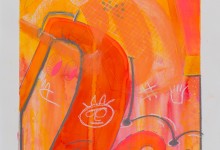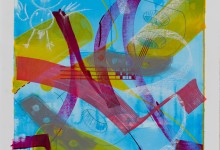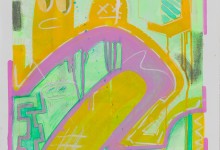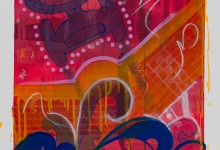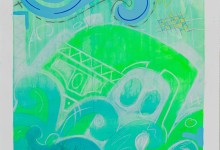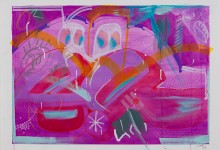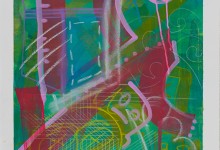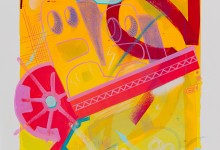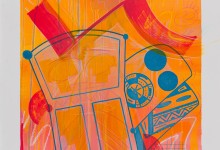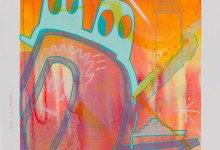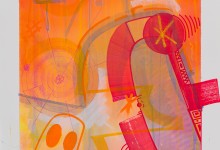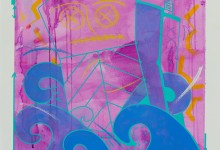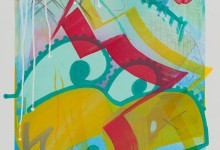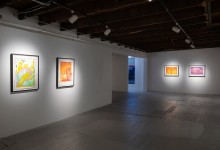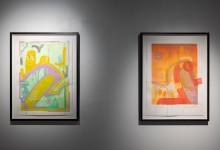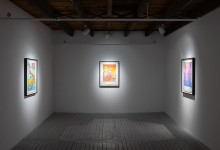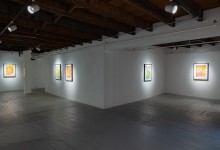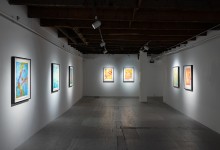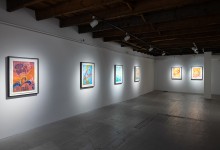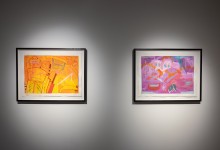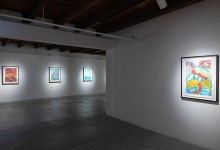Reception: Saturday, September 7, 2024, 3 p.m. to 5 p.m.
Sonny Assu: Unintentional Intention
Text by Sara Trapara
After a three-year hiatus, Sonny Assu returns from his artist residency at the Institute of American Indian Arts in Santa Fe, New Mexico, with a new series of vibrant artworks. The Unintentional Intention series remixes hard-edge Indigenous Northwest Coast iconography with Western and pop aesthetics, graffiti art, and Memphis Design—a core 90s style characterized by bright colours, geometric shapes and distinctive patterns. As a member of the Ligwilda’xw of the Kwakwaka’wakw Nations, Assu’s artistic practice is informed by a deep connection to the millennia-old Indigenous Northwest Coast art, along with his self-identification as a purveyor of pop, watcher of sci-fi, and collector of nerdy things.
Assu draws inspiration from the legacy of graffiti tagging that emerged in the 1990s as a way of marking territory. Amidst the dripping paint and dynamic lines, Assu playfully inserts a mixture of erratic markings, ranging from dead-eyed stick figures to scribbles and lines. He works closely with one of the most basic and iconic shapes of Indigenous Northwest Coast formline art—the Ovoid, a kind of hollow, rectangular oval traditionally combined with S-shapes, U-shapes, and other design elements to create culturally significant narratives. Assu’s artistic practice evolves the visual language of formline. His Ovoids are three-dimensional entities unto themselves, commanding the space of his paintings. Several Ovoids are endowed with eyes and mouths—figures Assu sees as “Ancestors” who watch over the scenes depicted in the artworks. Assu mobilizes the graffiti tag as a metaphor for the resurgence of Indigenous sovereignty, a theme central to his larger body of work, which is committed to challenging the legacies of colonialism.
Anishinaabe thinker Lawrence Gross reminds us that Indigenous peoples have already experienced the destruction of their worlds on an apocalyptic scale. Throughout his work, Assu demonstrates how ancestral ways of life survive, transform, and morph into new terrains of existence. While some artworks in the series have a more flattened, abstract pictorial space, several evoke bustling futurist spaces, apocalyptic fiery red skies and graffiti-tagged structures. Others evoke nostalgic, virtual worlds with pixelated clouds and gaming iconography. Symbols of mapping and navigation like compasses, wheels, and waves, allude to ongoing settler colonial campaigns that drastically alter and thieve Indigenous land, while the Kwakwaka’wakw copper shield stands as a symbol of wealth, abundance, and the resilience of ancestral tradition. The Unintentional Intention series demonstrates the force of Indigenous survivance across generations, making-kin with contemporary material culture and navigating post-apocalyptic worlds.


